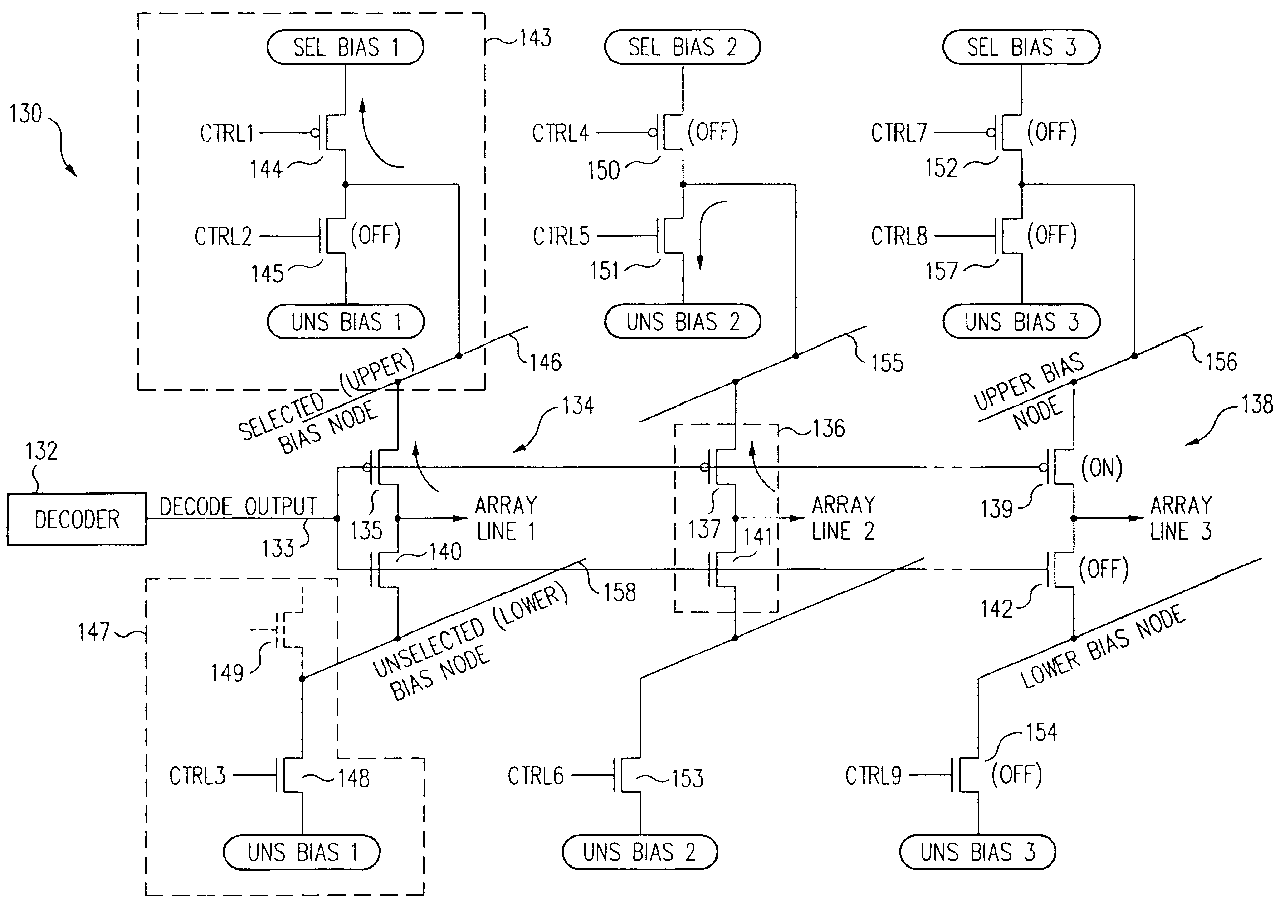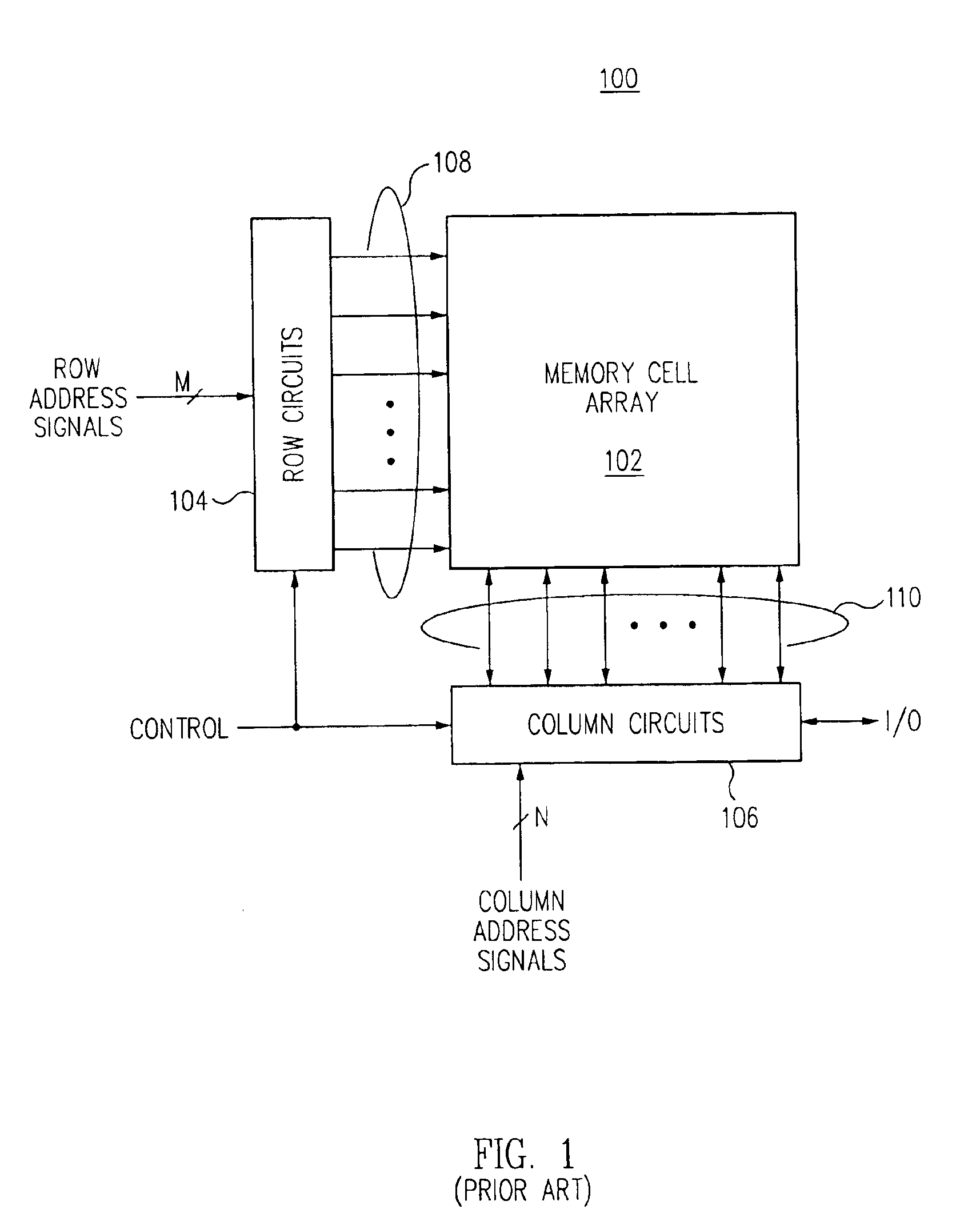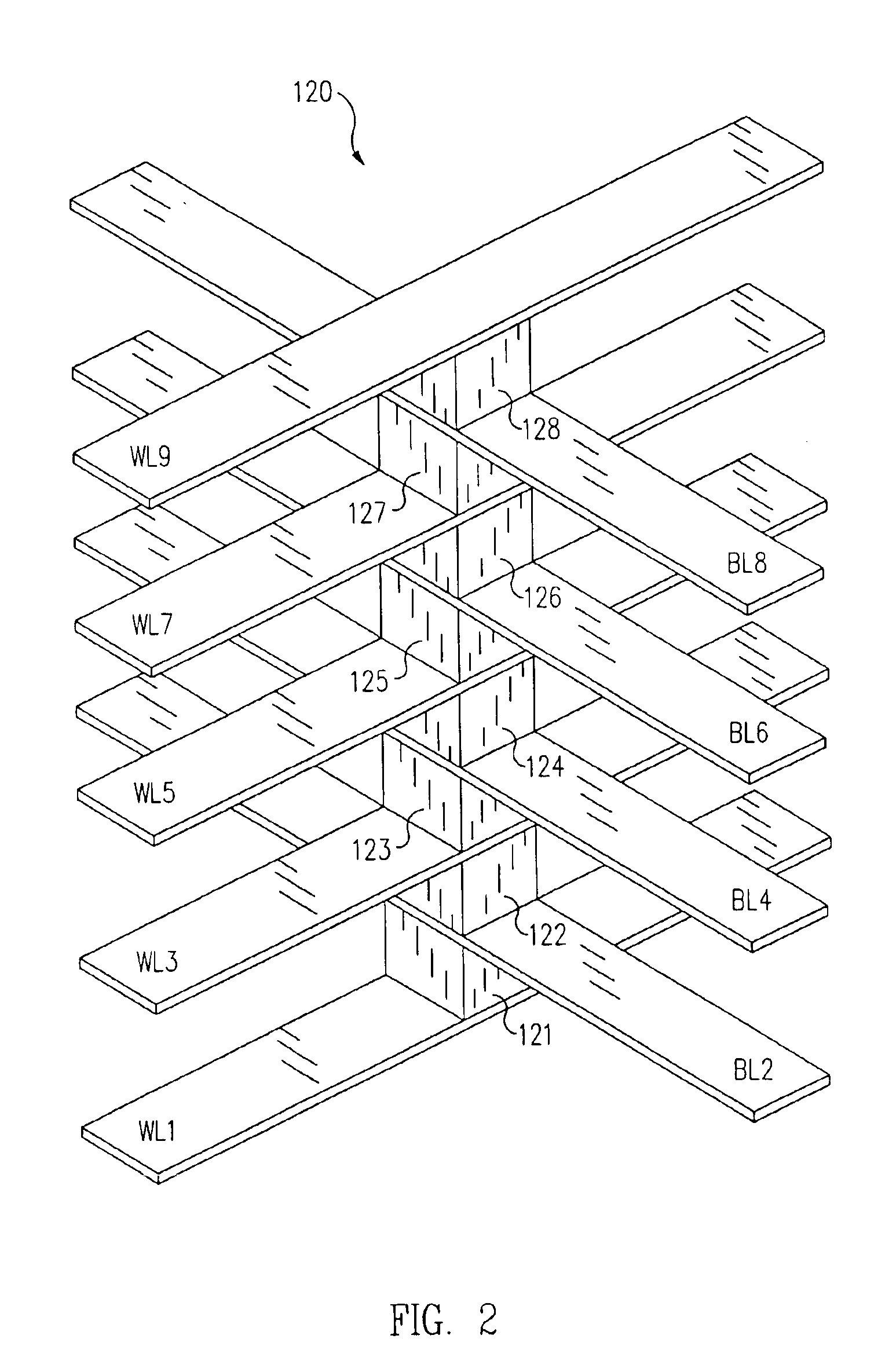Multi-headed decoder structure utilizing memory array line driver with dual purpose driver device
- Summary
- Abstract
- Description
- Claims
- Application Information
AI Technical Summary
Benefits of technology
Problems solved by technology
Method used
Image
Examples
Embodiment Construction
Referring now to FIG. 1, a block diagram is shown of an integrated circuit 100 including a memory array 102. In one embodiment of the invention, the memory array 102 is preferably a three-dimensional, non-volatile, field-programmable write-once memory array of passive element memory cells, although other memory arrays are also suitable and specifically contemplated, including re-writable arrays and two-dimensional arrays. As used herein, an integrated circuit having a three-dimensional memory array is assumed to be a monolithic integrated circuit, rather than an assembly of more than one monolithic integrated circuit. Each passive element memory cell within the memory array 102 is preferably a two-terminal memory cell having a steering element in series with a state change element, together connected between usually orthogonal (but not necessarily so) array terminal lines. These two elements within a memory cell may both be present before programming. Alternatively, the steering ele...
PUM
 Login to View More
Login to View More Abstract
Description
Claims
Application Information
 Login to View More
Login to View More - R&D
- Intellectual Property
- Life Sciences
- Materials
- Tech Scout
- Unparalleled Data Quality
- Higher Quality Content
- 60% Fewer Hallucinations
Browse by: Latest US Patents, China's latest patents, Technical Efficacy Thesaurus, Application Domain, Technology Topic, Popular Technical Reports.
© 2025 PatSnap. All rights reserved.Legal|Privacy policy|Modern Slavery Act Transparency Statement|Sitemap|About US| Contact US: help@patsnap.com



